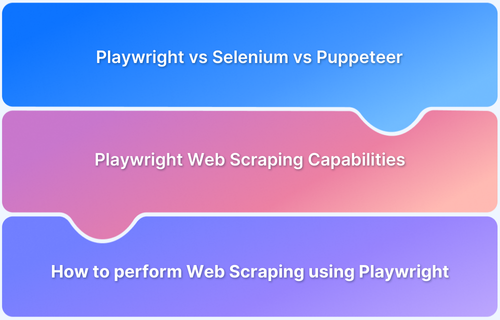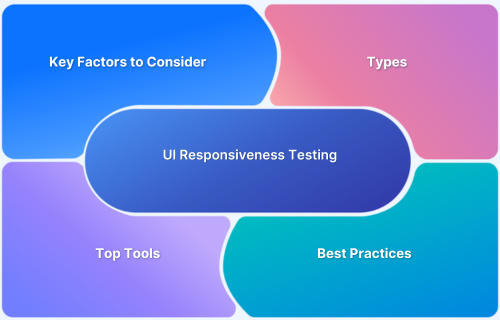Top 4 Cross Browser Testing Trends in 2019
By Himani Kankaria, Community Contributor and Pradeep Krishnakumar, Manager - June 14, 2019
The cross browser testing industry is constantly evolving, driven by shifts in user behavior and the launch of new device types and browsers. The percentage of the global population using a smartphone has jumped from 10% in 2011 to about 36% in 2018, as per a report by Statista. New device formats such as Smart Watches and AR/VR gears are coming to the market. Microsoft Edge is adopting Chromium and is opening itself to MacOS users. Users are becoming more privacy-conscious and are now averse to allowing browsers to track usage, thus adopting new browsers like Brave or upgrading to the upcoming Firefox Premium offering.
All this means that Developers, QA testers, Product Managers and Designers need to improve their testing infrastructure to compete with their biggest obstacle – a broken user experience.
Thus, the process and tools for Cross Browser Testing are constantly evolving to empower engineering teams to ship their websites with confidence. The top trends of 2019 are:
1. Cross Browser Testing on a Real Device Cloud
Recently, during Google I/O 2019, Google announced that there are over 2.5 billion active Android devices. Similarly, 20% of Apple users were not running the latest iOS version – in fact, 70 million devices were still running on the old iOS 8. Needless to say that all this means difference screen sizes, configurations, features, and more. So, when it comes to the ‘Test early and often’ approach, testing on a right range of real devices would be a smart move. Thus, cross browser testing on the cloud is the key solution.
Larger enterprises such as Microsoft, jQuery, Harvard University, Expedia and more have already started taking their browser testing to the cloud as they get more than 2000 browsers and multiple real devices to test their code on.
We expect many teams to move away from testing on iOS simulators and Android emulators. Engineering teams will adopt testing on real device clouds for cross browser compatibility testing.
So 2019 will see more and more businesses moving towards cloud-based cross browser testing tools as it makes testing quicker and more cost-efficient.
Try Testing on Real Device Cloud for Free
2. Adopting automation to get ready for newer technologies
Below are some hard-hitting facts –
- Around 75 billion Internet of Things (IoT) connected devices will be installed by 2025 (Statista)
- 43 million people will use Virtual Reality (VR), and 69 million people will use Augmented Reality (AR) by the year 2019. (eMarketer)
- Today, 15% of enterprises use Artificial Intelligence (AI), and 31% of the other enterprises plan to implement it in the next 12 months. (Adobe)
- 20% of C-level executives say that they use Machine Learning (ML) as a core part of their business. (McKinsey)
Companies are now seriously thinking about how to adopt these technologies. In some cases, a few functions/departments are already using these technologies. This means that companies need to figure out a testing process that will support company-wide adoption.
Such challenges will give rise to the adoption of automation in testing for cross browser compatibility across devices. Automation brings effortless scalability and high-quality experience by which the teams can release the updates faster.
As a starting point, the trend of incorporating Selenium testing in cross browser testing processes will see a dramatic growth in 2019 among all engineering teams.
Run Automated Selenium Test For Free
3. Enhancing Testing based on New Releases and changing User Behavior
Each year, the new product releases of the year have nudged teams to upgrade their testing process. These announcements might include the latest kind of mobile devices, updated versions of operating systems (iOS 13 has been announced already), 5G networks, and more. Recently, Apple announced its plan for building a foldable iPhone, and a few other brands have already launched them. So, the struggle to build responsive web design increases for website developers and testers.
Also, point-of-sale mobile transactions will be made by around 1.1 billion users by 2021, as per a report by Statista. Looking at the increasing number of users making mobile payments, the challenge for securing the transaction details on browsers without facing any vulnerabilities increases.
Hence, more intense test suites need to be prepared to ensure data privacy and security of user transactions.
4. Headless Testing in Early Development Stages
More and more organizations are now adopting the “Test early and often” approach to speed up delivery and efficiency. Why? Because you cannot wait for the entire development cycle to finish and then execute cross browser testing.
That is where headless testing comes in. Headless testing is testing the code on browsers without a graphical user interface (GUI).
Why headless testing? Because it won’t take time to render user interfaces and it would simply leverage the containers existing in browsers.
2019 should see more engineering teams adopting Headless Testing. We recommend you do that with caution since testing on real user interfaces is the only way to ship websites with confidence.
Get Ready for 2019
We are very excited about these emerging trends in 2019. We hope that as a team, you are also doing enough to get ready for these shifts. Below is a quick summary –
- Companies moving Testing across devices to the cloud
- Automating testing & gearing up to test for newer technologies
- Enhancing current testing strategy to support new user behaviors
- Considering headless testing


